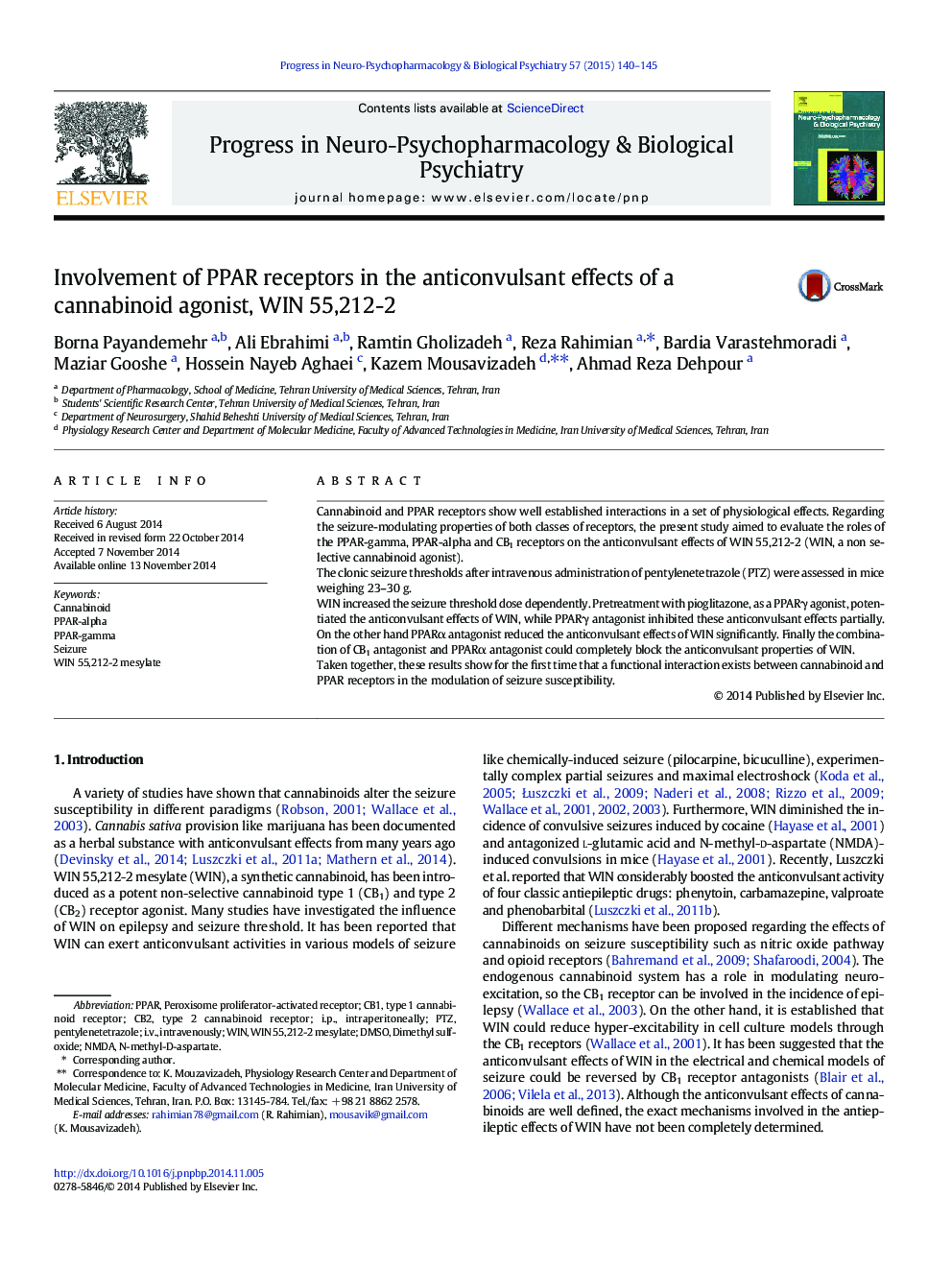| Article ID | Journal | Published Year | Pages | File Type |
|---|---|---|---|---|
| 2564779 | Progress in Neuro-Psychopharmacology and Biological Psychiatry | 2015 | 6 Pages |
•WIN 55,212-2, a cannabinoid agonist, showed anticonvulsant effects.•PPAR-gamma or alpha antagonist inhibited anticonvulsant effects of WIN partially.•Combination of CB1 and PPAR α antagonists completely blocked WIN protective effects.•Anticonvulsant properties of WIN are mediated via CB1/PPAR pathway.•The role of PPAR alpha seems more prominent in antiepileptic effects of WIN.
Cannabinoid and PPAR receptors show well established interactions in a set of physiological effects. Regarding the seizure-modulating properties of both classes of receptors, the present study aimed to evaluate the roles of the PPAR-gamma, PPAR-alpha and CB1 receptors on the anticonvulsant effects of WIN 55,212-2 (WIN, a non selective cannabinoid agonist).The clonic seizure thresholds after intravenous administration of pentylenetetrazole (PTZ) were assessed in mice weighing 23–30 g.WIN increased the seizure threshold dose dependently. Pretreatment with pioglitazone, as a PPARγ agonist, potentiated the anticonvulsant effects of WIN, while PPARγ antagonist inhibited these anticonvulsant effects partially. On the other hand PPARα antagonist reduced the anticonvulsant effects of WIN significantly. Finally the combination of CB1 antagonist and PPARα antagonist could completely block the anticonvulsant properties of WIN.Taken together, these results show for the first time that a functional interaction exists between cannabinoid and PPAR receptors in the modulation of seizure susceptibility.
